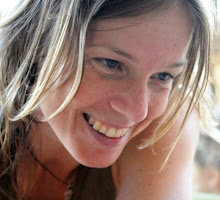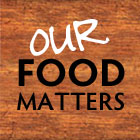
The three Abrahamic religions
After this in so many ways disturbing drive we arrived to the holy city and although Jerusalem is one of the most infected issues in the Israeli/Palestinian conflict it is also in some peculiar way what always gives me a sensation of hope. First we walked up Jaffa Street to visit an excellent book store, Sefer VeSefel on 2 Ya'Avetz Street. This bookstore is a gold mine with mostly used books, lots of English literature about Judaism, history, culture and religion. Anna was looking for a particular book for her Jewish studies but did not find it. I could have easily bought a whole bunch of books on different subjects, but my economy definitely does not allow that right now. Nevertheless, it was a joy walking around among all this knowledge.
We had sambusak for lunch and then we parted for a while. Anna needed to work for a few hours with her friend from Emek Shaveh, which is a non-profit association for archaeologists, local residents and human rights activists working to change the role of archaeology in the Israeli-Palestinian conflict, for example in the Arab neighbourhood Silwan in East Jerusalem, where the ancient Jewish site City of David is located. City of David is today administered by a settler organisation, Ir David Foundation, that uses the site as a political instrument to strengthen the control over the village, which of course is unacceptable. It is not reasonable that archaeological findings should serve as a means to prove possession by one people or one religion. It should neither ignore the local population. They should instead be an integral part of local culture. This is the mission of Emek Shaveh.
As Anna did her good cause, I headed to the Old City. I have stopped taking pictures there since I don't think that a picture ever can capture the real magical atmosphere. It has to be experienced, including the sounds and the smells. This was the first time I actually walked around alone in there so I picked up a map over the area from the tourist information office, but even with that, as well as my above-average sense of orientation, I was occasionally pretty disoriented, however never feeling lost. In here you get a sense of unity that right outside of the walls dissolves. Muslims, Jews and Christians mingle, Arabic, Hebrew and other languages are spoken and you get a taste of how it could be if bitterness and resistance were turned into unification and generosity. How difficult can it be to break down the imaginary walls and allow free movement? Jerusalem is a holy city for the three Abrahamic religions and will always be. There is no way around it and it has to be acknowledged and accepted.
I have passed the shouk-shopping honeymoon long ago and will not exit with bags full of scarfs, baubles and other souvenirs. However, I bought a nice pair of leather sandals that I bargained down to half price, which I was pretty satisfied with. I also got a bunch of natural sponges for some Swedes and a pack of Arabic coffee with cardamon for me and Yoram. Shopping in Mideastern shouks is not for the weak ones, unless you accept to be ripped off properly. If you don't bargain the salesmen will most likely go behind the curtain and laugh their heads off to the stupid tourist, rubbing their hands over how much money they earned. The first price offered is always way over what the product is really worth, except for groceries, and even after the most experienced bargainers (like my own Yoram) you can be sure that they still profited from the deal. I feel like an idiot most of the time, because I know that I am getting ripped off, but I try to think that as long as I find the price reasonable, I can accept that they "win". Nevertheless, I am improving my bargaining skills every time.
After a few hours Anna came back to the Old City and we took a walk around the shouk too. She wanted two scarfs for her daughter and that mission was quickly accomplished. Then we got caught in one of the junk dealer's small shop. In a small hole in the wall the floor, walls and ceiling was covered with old metal junk; plates, pots, lamps, mugs, jewellery, axes and chandeliers, in all kinds of metals, most of the things with a lot of patina on. We had a long conversation with the shop-owner Omar, and old Arab man. We mixed Arabic with Hebrew and English, drank coffee and looked at things. Every item seemed to have a story to tell and I could have easily picked a whole bunch of stuff. He had the most amazing lanterns hanging in the ceiling and it was not difficult to imagine my future garden with these lanterns hanging in the trees. This day he did not close any deal, but I will probably be back when the time is right (and the money is in my pocket).
Time flew and it was time for our last point on the schedule. We went to the Swedish Christian Study Centre (SCSC) close to the Jaffa Gate to hear a lecture by PhD Anders Runesson on "Myths and Facts about Parting of the Ways between Judaism and Christianity in the first Five Centuries". It was a very interesting lecture that dealt with the first centuries AD, where the Christ followers diverged from Judaism and created Christianity. Anders' approach was very refreshing in the way that instead of relying on theological scriptures he also took a starting point in archaeological findings to build hypotheses on the inter- and intra religious relationships within and between the different groups at the time.
There were mostly Christians attending, many of them Swedes that work in the region, and once again I felt the strong sensation of not belonging with them. There was an old Greek-Orthodox man who almost took over during the questioning and as if he was not aware of that there were Jews present in the room he ranted on about Judaism in a way that was anything but sympathetic. Some Christians also possess a for me pretty scary "holier-than-thou" kind of demeanour which seems more sanctimonious than genuine. On the way home I ventilated with Anna my inexplicable sympathy and feeling of belonging with the Jewishness rather than Christianity, and she explained that she had clearly sensed my vibes during the lecture. Lately I have discovered that I have some Jewish ancestors on both sides, however not close enough to claim Jewishness, but the label is not important to me. I am neither religious enough to convert. My spirituality is my own. Just as Jerusalem belongs to all of us, no matter what we are.






No comments:
Post a Comment